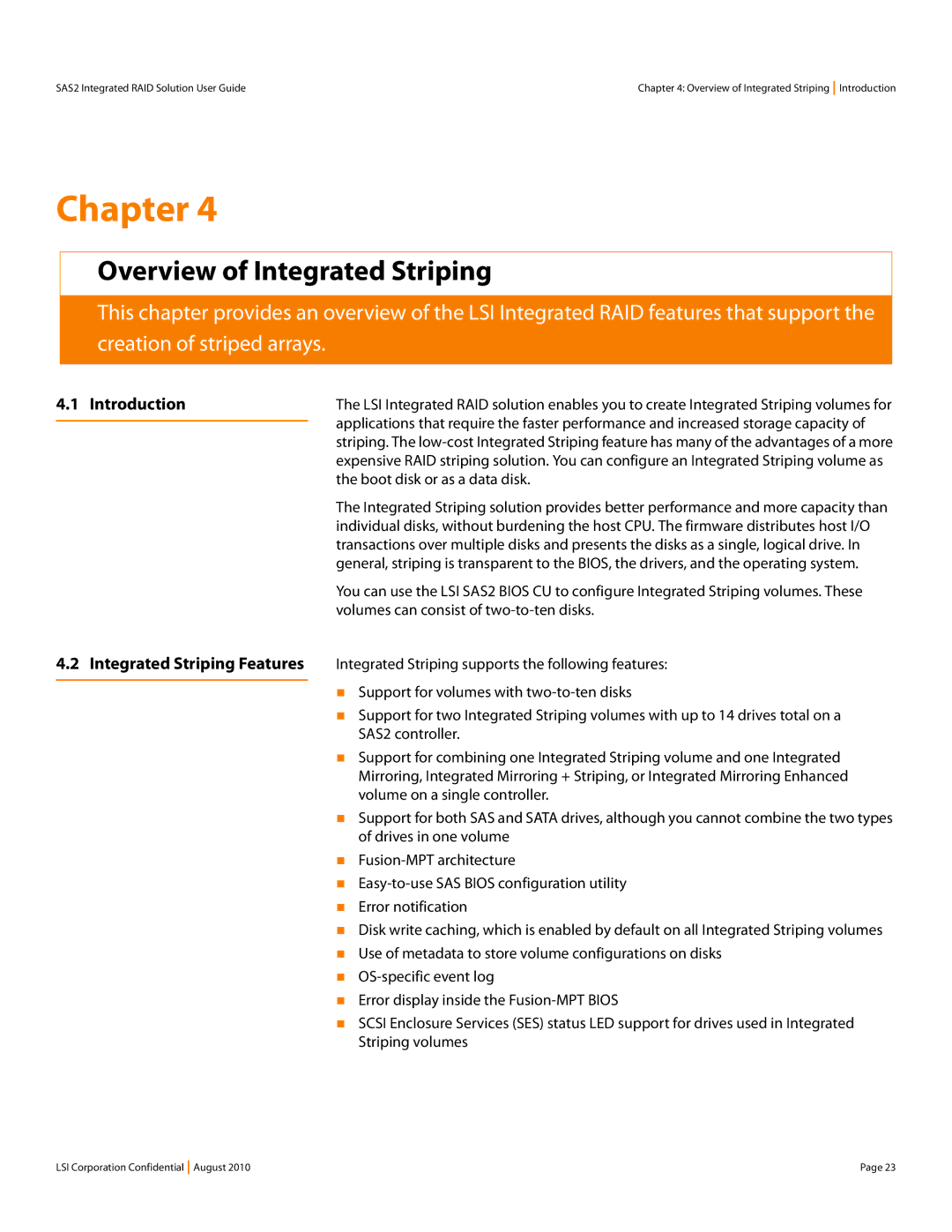
SAS2 Integrated RAID Solution User Guide | Chapter 4: Overview of Integrated Striping Introduction |
Chapter 4
Overview of Integrated Striping
This chapter provides an overview of the LSI Integrated RAID features that support the creation of striped arrays.
4.1 Introduction | The LSI Integrated RAID solution enables you to create Integrated Striping volumes for |
| applications that require the faster performance and increased storage capacity of |
| |
| striping. The |
| expensive RAID striping solution. You can configure an Integrated Striping volume as |
| the boot disk or as a data disk. |
| The Integrated Striping solution provides better performance and more capacity than |
| individual disks, without burdening the host CPU. The firmware distributes host I/O |
| transactions over multiple disks and presents the disks as a single, logical drive. In |
| general, striping is transparent to the BIOS, the drivers, and the operating system. |
| You can use the LSI SAS2 BIOS CU to configure Integrated Striping volumes. These |
| volumes can consist of |
4.2Integrated Striping Features Integrated Striping supports the following features:
Support for volumes with
Support for two Integrated Striping volumes with up to 14 drives total on a SAS2 controller.
Support for combining one Integrated Striping volume and one Integrated Mirroring, Integrated Mirroring + Striping, or Integrated Mirroring Enhanced volume on a single controller.
Support for both SAS and SATA drives, although you cannot combine the two types of drives in one volume
Error notification
Disk write caching, which is enabled by default on all Integrated Striping volumes
Use of metadata to store volume configurations on disks
Error display inside the
SCSI Enclosure Services (SES) status LED support for drives used in Integrated Striping volumes
LSI Corporation Confidential August 2010 | Page 23 |
